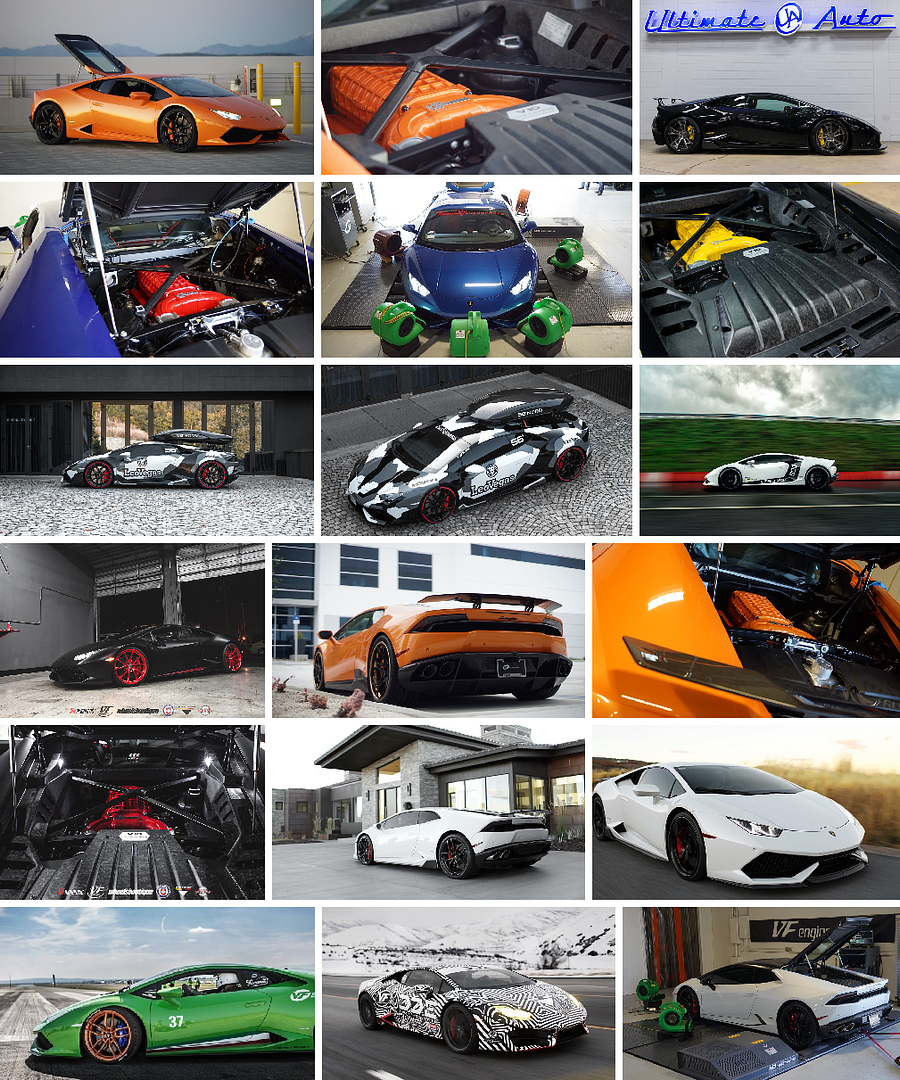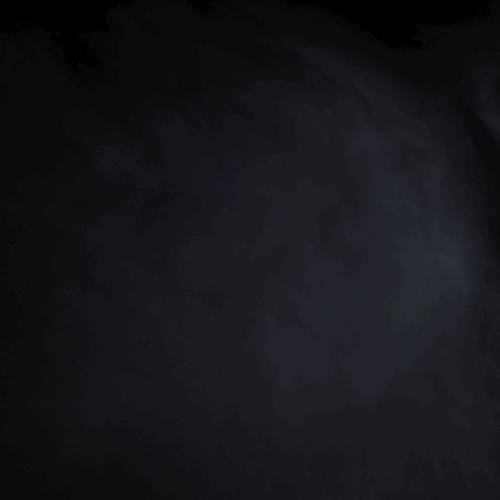Results 1 to 6 of 6
Threaded View
-
09-19-2017, 12:19 AM #1
VF Engineering - VF800 Supercharger FAQ Master Thread
With hundreds of systems sold since the original release in mid 2010, the VF760 and VF800 Supercharger Systems
for the Lamborghini Huracan (and Gallardo LP cars) has become synonymous with high power bolt on performance,
especially around the enthusiast community.
Local Cars & Coffee events, Track Days, high profile Road Rallies, Supercar Sundays; if you're looking, it's likely you've
had the chance to peak into the engine bay and see the nicely packaged Eaton TVS2300 roots type blower sitting atop
the 5.2L V10 engine just like is was meant to be there.

Until recently the only question when considering forced induction on these cars was whether you wanted to fully commit
to a Twin Turbo build, or bolt on a VF Engineering Supercharger. Fast forward to today and new competition in the
Supercharger space has inspired new questions, and the purpose of this thread.
The following FAQ's (frequently asked questions) are being borrowed directly from various phone, e-mail and private
message conversations that we've been receiving from inquiring minds who have already decided on the Supercharger
being their preferred method of boosted power, and are now trying to decide between which brand of Supercharger is
going to offer the most value for their money.
If you are considering purchasing a Supercharger for your Lamborghini, we encourage you to join the conversation
and ask any questions that we may have missed. If you are the owner of a VF Engineering Supercharger System,
we also encourage you to share your reviews and anything you feel may have influenced your buying decision.
Please keep in mind that the topic of this thread is based on Supercharging, so let's save the TT vs. SC questions for
another day and another thread!
How long has VF Engineering been supercharging the 5.2L V10 engine?
In early 2010 the first VF Engineering started development for the 5.2L V10 found in the Audi R8 and Lamborghini Gallardo simultaneously before the 2010 SEMA Show in Las Vegas Nevada. At that time, what was known as the VF720 Supercharger for the Audi R8 was exclusively distributed by Stasis Engineering and sold through franchise Audi Dealerships across the country. The VF760 Supercharger for the Lamborghini Gallardo was also produced in limited production for Authorized VF Engineering Dealers around the world.
Where was the VF system designed and manufactured?
The entire system was conceptualized, designed, and engineered around the Eaton TVS2300 by VF Engineering in Anaheim, CA.
The supercharger mounting tray/heat exchanger/lid, water cooling system, belt and pulley system, and a host of other unique components to bring the entire system together, were ALL conceived, prototyped, and tested in-house using sophisticated scanning tools, 3D modeling, and rapid prototyping equipment in our own development lab. The entire system is 100% made in the U.S. with all of the components either manufactured in-house or using local vendors who are all within 90 miles of our facility in order to ensure the best possible manufacturing quality, lead times, and quality control.
Has your design (or any individual components) been licensed to other manufacturers?
VF Engineering has not voluntarily shared or licensed any designs, drawings, intellectual property, or offered consultation to any other manufacturers. To this day the VF Engineering "VF-series" of supercharger systems for the 5.2L V10 engine remain the only systems that were 100% conceptualized, engineered, and manufactured from scratch without borrowing insight from any other manufacturers design architecture. This includes first and second generation Audi R8 V10, as well as the Lamborghini Gallardo and Huracan.
*Special Note: The VF800 systems for the 2nd generation dual injected V10 engine found in the 2016 and later Audi R8 V10 and V10 Plus, as well as the Lamborghini Huracan, is a different physical design than the previous generation system. VF Engineering was once again the first to market, and is currently the only supercharged option available. Our official 2017 R8 V10 and V10 Plus released is scheduled for later this month.
Why did you decide on the "roots type" blower from Eaton?
Eaton is the leading supplier of OEM supercharger systems across the world, producing more than 400,000 supercharger units per year. As an existing OEM supplier to Audi AG, we recognize that their Twin Vortices Series (TVS) superchargers provide the best combination of performance, efficiency, top tier manufacturing and quality control standards for this specific platform. While other options were available from other manufacturers that offer higher capacity and claim better efficiency at much higher boost levels, the chosen TVS2300 unit has proven itself mathematically, and in practical use, to provide the greatest efficiency at the intended boost pressure and volume to produce the desired horsepower and torque level for this 5.2L V10 application. In addition, the TVS supercharger employs other significant features that minimize NHV (noise, harshness, and vibration) and an internal bypass valve that virtually eliminates parasitic loss. Based on our criteria which takes into account quality, performance, reliability, and longevity, we feel the Eaton TVS2300 is what Audi themselves would have used if they were to produce a hyper car based on the same V10 engine.
Are there any changes in service requirements or intervals? (can it still be serviced at the dealership)
The VF Engineering VF760 Supercharger System requires NO change to your normal vehicle service requirements or intervals. Due to the fact that a significant number of these systems were sold and installed through franchise Audi and Lamborghini dealerships, it is possible that your local dealer has first hand experience with our system. Nothing about the design or installation will affect their ability to perform standard scheduled maintenance, and the only additional preventative maintenance is to change the supercharger belt at approx. 40,000 miles. The TVS2300 supercharger unit itself has a sealed oil reservoir that will not require any maintenance other than it's first oil change between 80,000-120,000 miles.
How difficult is the installation? (and can I ever go back to stock?)
The VF760 System is considered direct bolt on, with no major modifications or fabrication required. It does not require modification to any of the OEM parts and is therefore 100% reversible back to stock at any time. The estimated installation time of 28-32 hours is for an experienced Audi/Lamborghini technician, or an Authorized VF Engineering installer with prior experience with our system. While the difficulty level is not high for an experienced technician with current factory training, we are selective about the shops we authorize to install these systems, and all Authorized VF Engineering installers will have a direct line of contact to our technical department to assist along the way. When an Authorized Installer is not available in your immediate area, we do provide in-house installation our our own facility in Anaheim, California.
What am I getting for my money by going with VF Engineering over another manufacturer?
You're getting a system that is comprised of the highest quality components, from the manufacturer with the longest history and experience with this platform, being controlled by the most thoroughly developed and refined ECU software solution available, which when put all together, delivers the best overall performance and driving experience possible.
ABOUT VF-Engineering:
VF-Engineering, Inc. uses state of the art processes to design, create, test and manufacture one of the highest quality supercharger kits on the market. The VF-Engineering facility is Located in the heart of Southern California. All our products are created and tested in house to ensure optimal gains and ensure factory like driveability and reliability.
Proudly Made in the USA.

P: 714-528-0066
E: sales@vf-engineering.com
http://www.VFE1.com






 Reply With Quote
Reply With Quote








Bookmarks